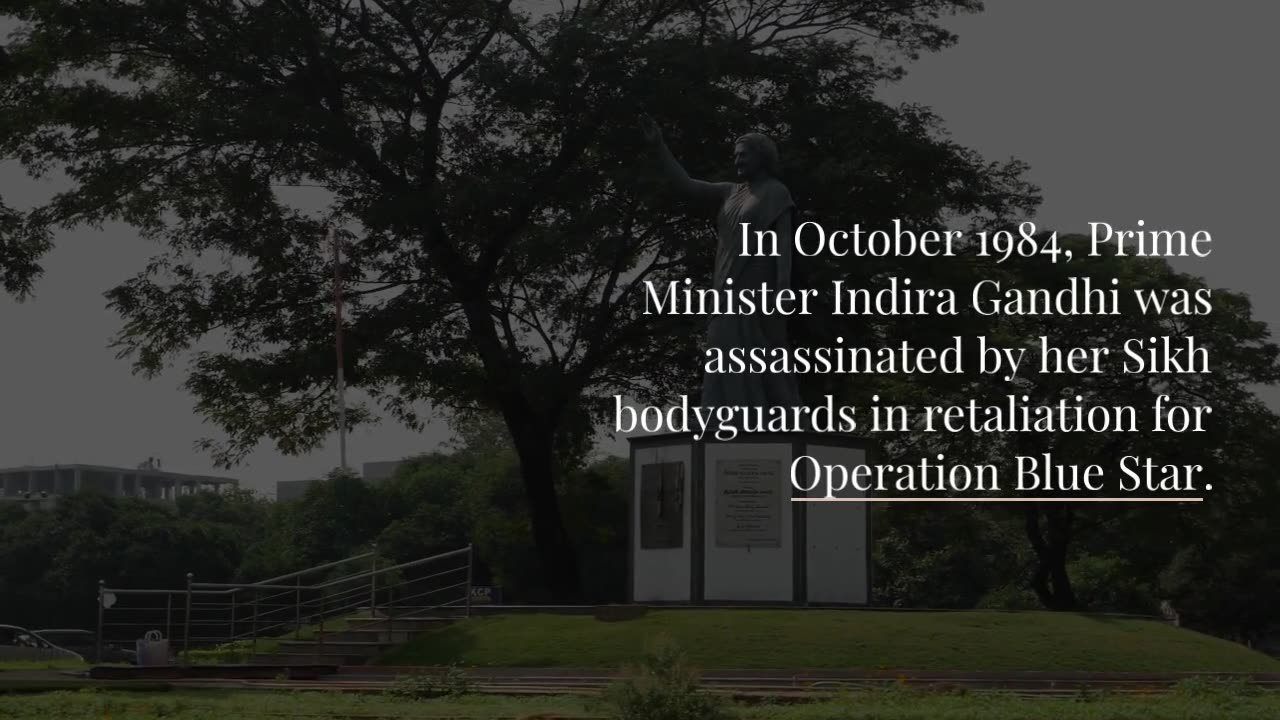Premium Only Content

The Khalistan Movement: A Complex Chapter in India's History! Indian Punjab
xplore the turbulent history of the Khalistan movement, a pivotal chapter in India's past, in this concise overview. From its roots in socio-political unrest to its transformation into a contentious issue in Indian politics, we delve into the key events and dynamics that have shaped the Khalistan movement:
Roots in Unrest: Discover how the Khalistan movement was born amidst deep social and political unrest in Punjab during the late 1970s and early 1980s, as Sikhs, a religious minority in India, grappled with long-standing grievances.
Rise of Militancy: Learn about the momentum gained by the movement when some Sikh leaders turned to militancy, led by figures like Jarnail Singh Bhindranwale, and how the Golden Temple in Amritsar became a focal point for militant activities.
Operation Blue Star: Explore the tragic events of June 1984 when the Indian government launched Operation Blue Star to remove Bhindranwale and militants from the Golden Temple, resulting in a bloody siege and significant loss of life.
Assassination of Indira Gandhi: Understand how the assassination of Prime Minister Indira Gandhi in October 1984, by her Sikh bodyguards in retaliation for Operation Blue Star, triggered anti-Sikh riots and widespread violence.
Continued Violence: Witness the cycle of violence that persisted throughout the 1980s and early 1990s, with Sikh militant groups engaging in acts of terrorism and the Indian government responding with counterinsurgency operations.
Decline of Militancy: Explore the factors that led to the decline of the Khalistan movement by the mid-1990s, including efforts by Indian security forces, decreased external support, and internal divisions among Sikh militant groups.
Political Process: Learn how the demand for Khalistan gradually transformed into calls for greater autonomy within India's federal structure, with attempts at political resolution such as the Punjab Accord of 1985.
Current Status: Discover the current state of the Khalistan movement, which has largely lost its earlier momentum. While some Sikh groups continue to advocate for rights and autonomy within India, the demand for a separate Sikh state has diminished considerably. Punjab is now a relatively peaceful state, and Sikhs hold significant political influence.
Despite its decline in militancy, the Khalistan movement remains a contentious issue in Indian politics, shaping the dynamics between the Sikh community and the Indian government. Explore this complex chapter in history and its enduring socio-political implications.
-
 1:03:04
1:03:04
In The Litter Box w/ Jewels & Catturd
20 hours agoDemocrats Come Unglued | In the Litter Box w/ Jewels and Catturd Ep. 735 - 2/5/2025
37.5K16 -
 1:44:25
1:44:25
The Quartering
4 hours agoTrump Impeachment, Democrat Insurrection, Massive Scandal At Politico & DC Crash Update!
59.2K37 -
 LIVE
LIVE
Dr Disrespect
5 hours ago🔴LIVE - DR DISRESPECT - KINGDOM COME: DELIVERANCE 2 - FIRST IMPRESSION
3,454 watching -
 37:54
37:54
CryptoWendyO
3 hours ago $0.20 earnedBEST DAY IN CRYPTO HISTORY
5.36K1 -
 LIVE
LIVE
Film Threat
7 hours agoVERSUS: FANTASTIC FOUR + CAPTAIN AMERICA + QUENTIN TARANTINO'S EPIC RANT | Film Threat Versus
130 watching -
 9:06
9:06
CryptoWrld
11 hours ago $1.00 earnedHow Nonprofits Use Blockchain Tech
8.87K2 -
 16:38
16:38
SLS - Street League Skateboarding
14 days agoRayssa Leal's Most Clutch SLS Wins Ever! 🥶🏆
73.8K4 -
 1:06:29
1:06:29
Russell Brand
5 hours agoGaza Takeover? Trump’s Bold Plan Sparks Global Outrage – SF532
133K258 -
 1:57:32
1:57:32
The Charlie Kirk Show
4 hours agoGaza Thoughts + DOGE The Destroyer | Sen. Schmitt, Benz | 2.5.2025
139K31 -
 1:21:08
1:21:08
Simply Bitcoin
5 hours ago $1.64 earnedNEW REPORT: Bitcoin ETF Insider Doubles Down on UNTHINKABLE 2030 prediction! | EP 1176
42.9K1